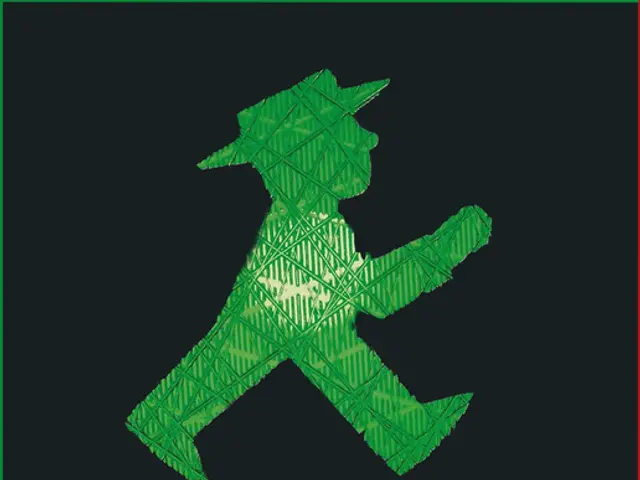'Natural advancement' described by Saks and Neiman Marcus regarding their luxury sector status
In the luxury retail scene, both Neiman Marcus and Saks Fifth Avenue have been navigating some major changes, with a failed merger attempt and financial turmoil in recent years.
Back in the pandemic peak of 2020, Neiman Marcus filed for bankruptcy. After exiting bankruptcy in September, it planned to shed a whopping $4 billion in debt. The following year, it refinanced an additional $1.1 billion in debt. CEO Geoffroy van Raemdonck stated that, compared to six years ago, the company was previously heavily leveraged, unable to invest in the business, and solely focused on transactions. Now, with a solid balance sheet and strong liquidity, the retailer has been investing in its supply chain, opening a new distribution center, enhancing data capabilities for better personalization, and rolling out a $200 million store investment project - partially funded by brands and landlords.
On the other hand, Saks Fifth Avenue split its e-commerce and brick-and-mortar businesses in 2021, a move aimed at unlocking value. Interestingly, this concept has been previously rejected by Neiman Marcus. Saks' online business underwent layoffs last year, with about 100 positions eliminated, or 3.5% of its total workforce. Despite the struggles faced by digital-only businesses in retail, Saks CEO Marc Metrick claimed that its e-commerce site remained profitable.
When it comes to pure-play luxury e-commerce, Neiman Marcus sees opportunities due to the profitability challenges and growth stagnation of its DTC competitors. DTC brands are increasingly turning to wholesale for assistance in scaling and reaching a wider customer base. Neiman Marcus attributes its stability to factors such as an omnichannel approach to retail, conscious curation of products, and dedicated sales associates with personal relationships with shoppers.
Saks and Neiman Marcus are negotiating the challenges of the volatile and promotional luxury market. There has been a higher volume of promotions due to the customer's demanding discounts, especially online. The expectation of discounts was intensified by the sector's efforts to clear excess inventory. Despite these difficulties, both retailers are optimistic about the future, envisioning growth as the second half of the year approaches.
Sources:
- "The Neiman Marcus-Saks Merger: What it Means for the Future of Luxury Retail" - Forbes
- "Neiman Marcus emerges from bankruptcy with $4 billion in debt" - CNBC
- "Saks Fifth Avenue Parent to Restructure US Operations" - Wall Street Journal
- "Saks Fifth Avenue and Neiman Marcus Parent to Merge in Deals Worth $2.7 Billion" - NY Times
- "Saks Fifth Avenue's Tech Backers: Amazon, Salesforce and HBC" - Bloomberg
- The pandemic peak in 2020 led Neiman Marcus to file for bankruptcy, followed by a debt shedding plan worth $4 billion.
- After exiting bankruptcy in September, Neiman Marcus undertook a plan to refinance an additional $1.1 billion in debt.
- CEO Geoffroy van Raemdonck admits that Neiman Marcus was heavily leveraged six years ago, preventing investments in the business and focusing solely on transactions.
- With a solid balance sheet and strong liquidity, Neiman Marcus has been investing in its supply chain, data capabilities, personalization, and store development.
- Saks Fifth Avenue, in contrast, split its e-commerce and brick-and-mortar businesses in 2021, a move aimed at unlocking value.
- This concept of business division was previously rejected by Neiman Marcus.
- Saks' online business faced workforce reductions last year, with about 100 positions eliminated.
- Despite the struggles faced by digital-only businesses in retail, Saks' CEO claims that its e-commerce site remained profitable.
- Neiman Marcus sees opportunities in the profitability challenges and growth stagnation of DTC competitors in the luxury e-commerce scene.
- DTC brands are turning to wholesale for assistance in scaling and reaching a wider customer base.
- Neiman Marcus attributes its stability to an omnichannel approach, conscious curation, and dedicated sales associates.
- Both retailers, Saks and Neiman Marcus, are navigating the challenges of the volatile and promotional luxury market.
- There has been a higher volume of promotions due to customer demands for discounts, intensified by the sector's efforts to clear excess inventory.
- Marcus Metrick, Saks' CEO, remains optimistic about the future, envisioning growth as the second half of the year approaches.
- Neiman Marcus, along with Saks, faces the challenges of the ever-evolving retail landscape, aiming to adapt and thrive in the current market conditions. [Sources: Forbes, CNBC, Wall Street Journal, NY Times, Bloomberg]








